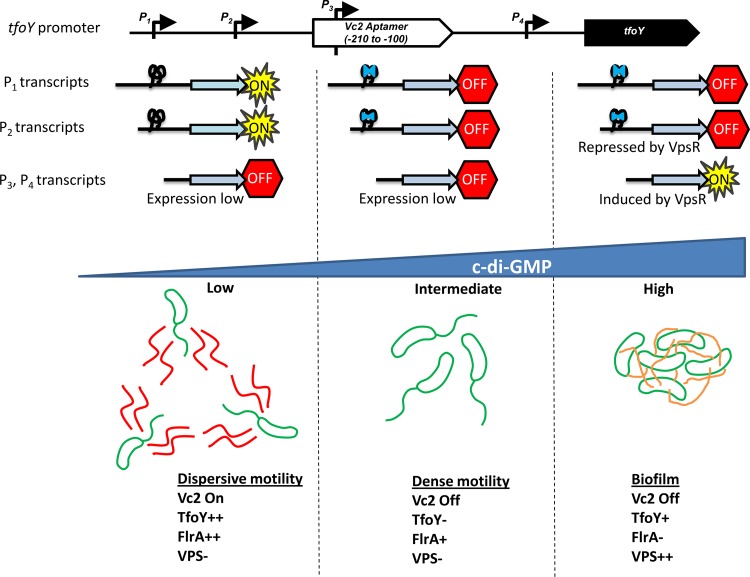FIG 8.
Model for three c-di-GMP states in V. cholerae. Our results suggest that the regulatory network controlled by c-di-GMP in V. cholerae can be simplified to three states. Top, status of the tfoY transcripts; bottom, state of the cells and other regulatory factors. At low c-di-GMP concentrations, TfoY expression is high due to the Vc2 riboswitch being unbound in the P1 and P2 transcripts, and FlrA transcriptional activation is maximal, leading to dispersive motility. At intermediate c-di-GMP concentrations, TfoY is poorly expressed, as Vc2 is bound to c-di-GMP in the P1 and P2 transcripts, but FlrA retains some ability to induce transcription of the flagellar biosynthesis genes, resulting in dense motility. At high c-di-GMP concentrations, the VPS genes are induced, driving biofilm formation and inhibiting motility. FlrA is unable to induce transcription due to c-di-GMP binding. VpsR induces transcription of the P3 and P4 transcripts, leading to intermediate expression of TfoY, but it cannot induce motility due to VPS production and FlrA inhibition.

